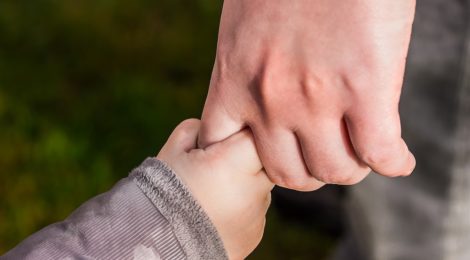
Obsessive-Compulsive Symptoms May be Impacted by Attachment Styles
You may know someone with any or all of the following behaviours: someone who meticulously organizes things in their environment, repeatedly checks to see if the door is locked, over-washes their hands, or ruminates over negative thoughts. Some may even call them ‘a little OCD’ referring offhandedly to obsessive-compulsive disorder.
Although many of us show some obsessive-compulsive symptoms, the requirements for an OCD diagnosis are much more specific, and the disorder can be debilitating. The root cause of OCD symptoms remains unknown, but a study by Wieke A. Van Leeuwen and a team of researchers at the University of Amsterdam found a strong correlation between OCD symptoms and insecure attachment styles in both OCD patients and the general public.
According to attachment theory, the degree to which our needs are met by primary caregivers ultimately shapes our self-image and our view of others and the world. Attachment styles are divided into four categories: secure, anxious, avoidant, and fearful, with the latter three considered ‘insecure’ attachment styles.

Rita (name changed for anonymity) is a 60-year-old single mother who lives alone in Tehran but frequently visits her daughter in Toronto. She shows an avoidant style of relating to others and has struggled with severe OCD for the past four decades of her life. In an interview with the Trauma and Mental Health Report (TMHR), she shares her story:
“I’m not comfortable asking for help. I have always tried to manage things by myself. Now, I don’t want others to know about my OCD. My mom always cautioned me about trusting anyone other than my parents, saying that even siblings can take advantage of each other. After my divorce, the burden of responsibilities in my life grew, and my OCD got worse and worse.”
Rita has a love-hate relationship with personal responsibility. It is both a source of meaningful joy and anxious feelings. Since childhood she has been a perfectionist, crying if she failed to get a full mark at exams. She still prefers accomplishing a task to social activities:
“If I do well in my job or accomplish a task, that’s what makes me happy. I’ve always preferred doing solo activities to hanging out with friends or social gatherings. I feel like responsibility gives meaning to my life; engaging in social activities seems pointless. But when the responsibility gets too much, I am always anxious that I won’t be able to handle it.”
Many of the emotional and cognitive processes seen in OCD symptoms overlap with those seen in insecure attachment styles. Dana Gorelik and Alison Rose have been working with patients struggling with severe OCD symptoms at Sunnybrook’s specialized OCD treatment program at Frederick W. Thompson Anxiety Disorders Centre. Gorelik says:
“Often OCD attaches itself to things people value the most. People who value family can have thoughts about bad things happening to their family, and they feel compelled to perform these rituals.”
OCD patients often struggle with tolerating stress and difficult emotions, and attachment style is closely linked with emotion regulation. Gorelik continues:
“Sometimes they have trouble understanding the emotion, they may experience the physical sensation associated with anxiety but have a problem with slowing down and really experiencing these emotions.”
Rose explains the importance of having a compassionate relationship both within a personal and social context:
“I incorporate self-compassion interventions and exercises into my work with clients, especially when clients are hard on themselves given struggles with self-critical rumination and perfectionistic tendencies.”
She elaborates that a central component of self-compassion is ‘common humanity’: recognizing that human suffering is part of the human experience and is shared by others. Peer support groups for OCD can be highly beneficial, allowing for an opportunity to meet and discuss shared experiences.

Rita’s daughter Alley was diagnosed with OCD at the age of 13. Now in her thirties, she shared her story and path to recovery with TMHR:
“I was put on a bunch of medications. I never saw a therapist to talk to. It was tough, but I think the medications helped take the edge off my anxiety. After the diagnosis, I opened up and talked about my feelings with my mom. I also started to gravitate more towards spirituality. For me, it was the faith that I am divinely supported, loved, protected, and provided for that really helped.”
Not everyone with ‘a little’ OCD needs a diagnosis or treatment. Still, for those who do, an understanding of attachment theory may help them move forward. For psychologists, these new avenues of research provide different perspectives, and expand the scope of treatment of OCD through the integration of attachment-based strategies.
– Azin Dastpak, Contributing Writer
Image Credits:
Feature: Pixabay at Pexels, Creative Commons
First: Niklas Hamann, Used with Artist’s Permission
Second: Korney Violin at Unsplash, Creative Commons




Excellent article and very insightful!